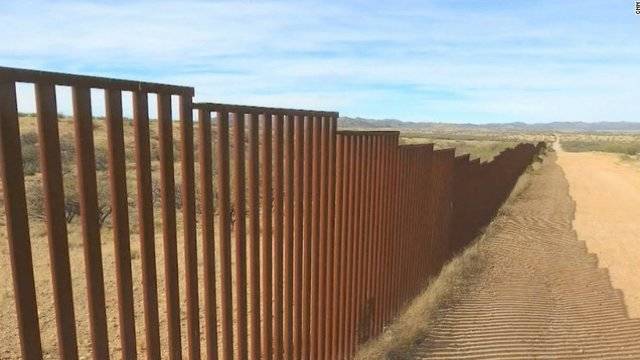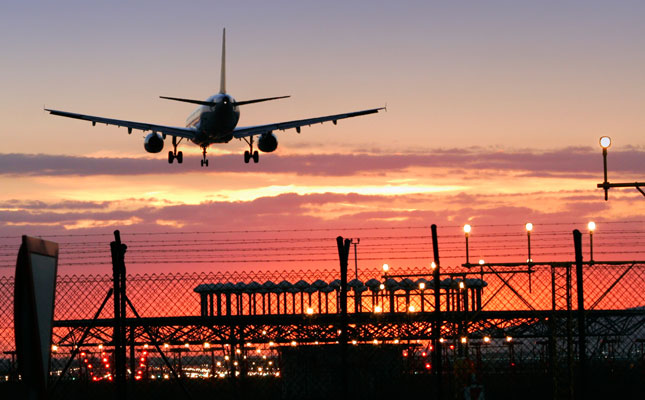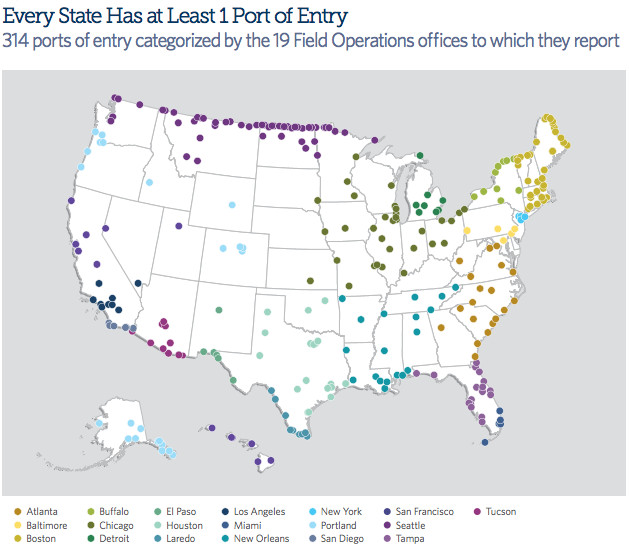President Trump is preparing to address the nation tonight, hoping to make his case that the U.S. faces a crisis at the border with Mexico that demands the construction of a $5 billion protective wall.
In his televised speech from the Oval Office, Trump might announce intentions to declare a national emergency even as countless critics have pointed out that the president is behind the curve in assessing illegal immigration concerns.
Frankly, the president is obsessed with closing off the Southern border while the real problem in 2019, as Fox News reported over the weekend, consists of immigrants arriving here by airplane. Numerous reports, including some issued by the Trump administration, indicate that illegal border-crossings are down substantially while the biggest source of undocumented immigrants is those who overstay their visas and make a home in America.
One report by the Center for Migration Studies estimated that about two-thirds of those who add to the illegal immigrant population each year came here on a temporary visa and failed to return to their homeland when their time in the U.S. was up.
These are people from across the globe who fly into the U.S. after they were issued a visa for work, travel, university studies or visiting family members. Due to ineffective federal enforcement of the visa process, a majority of recently arrived unauthorized immigrants come from Asia and other countries, including Canada, not from border crossings by Mexicans and those fleeing Central America.

The Trump administration’s Department of Homeland Security (DHS) has celebrated border security successes — apprehensions along the Southwest border plummeted by approximately 80 percent, from a high of over 1.6 million in FY 2000, to around 300,000 in FY 2017 — the lowest level on record. This comes after three decades of pouring money into increases in Border Patrol officers and technology-based solutions.
At the same time, the latest DHS report, estimated that more than 700,000 visa holders should have left sometime during the fiscal year ending Sept. 30, 2017, but stayed here illegally. The vast majority of overstays – almost 90 percent – are from places other than Mexico and Central America.
Former Congresswoman Candice Miller of Michigan began sounding the alarm about the porous visa system nearly a decade ago during the Obama administration, yet little has changed.
In fact, 2017 was only the second year that DHS saw the need to publicly report the overstay figure.
Or consider this: One recent so-called innovation by Immigration Customs and Enforcement (ICE) is that they now email visa holders to warn them that their legal residency is about to expire. Imagine that. In comparison, for many years typical customers of a news publication or a discount shopping network have been bombarded with emails as their subscription was facing expiration.
What we have here is a failure to prioritize.
The visa enforcement system stands as an obvious problem in need of additional resources while numerous solid arguments exist that topple Trump’s insistence on building a $5.6 billion border wall.
As Trump sees the nation in crisis mode, let’s take a quick look at some of the issues under debate about border crossings from Mexico:
- Drugs – The Drug Enforcement Administration (DEA) says that most drugs smuggled into the U.S. through Mexico are hidden in cars and large trucks that cross the border at legal ports of entry.
- Crime – Studies show that U.S. cities on the Mexican border have lower-than-average crime rates and that illegal immigrants across the nation, many of whom live in the shadows, have a lower rate of criminal convictions than American-born citizens.
- Terrorism – The newest information that came out this week shows that in the first half of 2018 just 14 people were turned away at the Southern border because they showed up on a terrorism watch list. They were not arrested or charged with anything. The State Department said in a September report that there is “no credible evidence” of any terrorist coming across the Mexican border at any time.
- The economy – Unauthorized immigrants, most of whom hold low-wage jobs, represent less than 5 percent of the U.S. workforce, and most of those undocumented workers are located in only a handful of states. Most of the country is barely affected by immigration.
- Welfare benefits – Despite unending phony claims made on social media, including one tweet by Trump, immigrants in the country illegally are not eligible for most government benefits programs by law, and the few areas of eligibility mostly involve assistance for children. There is no federal program that directly gives cash to immigrants in the country illegally.
- Geography – Completing the remaining 1,300 miles of the border wall east to the Gulf of Mexico would mean traversing areas that include mountains, wide swaths of the Rio Grande River, small towns and ranches. The Trump administration plan would require the federal government to seize private property through the eminent domain process.
One other obvious issue to consider is that those seeking to enter the U.S., or overstay their temporary residency, have hundreds of access points from which to choose. Beyond the gaping holes in the enforcement of the U.S.-Canadian border, the map below shows the 314 legal ports of entry – roads, bridges, sea ports and airports – that are overseen by 19 Border Patrol regional offices.
Photo: Jeraldinephneah.com






